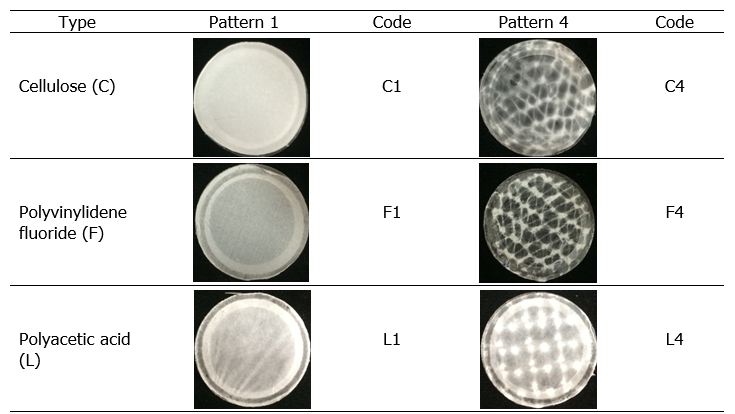Growth and root formation in the microshoots of three basils cultured in vitro on different types and patterns of electrospun nanofibre mats
Keywords:
holy basil, lemon basil, sweet basil, Murashige and Skoog medium, plant tissue cultureAbstract
Nanofibre mats have been mainly used in relation to human health sciences. The application of this material in plant tissue culture is still rare. In this research, different types and patterns of nanofibre mats were used to culture microshoots (size 2-3 mm) of 3 types of basils in vitro. There were 3 types of materials for fabrication of a nanofibre mat in this study: cellulose (C), polyvinylidene fluoride (F) and polylactic acid (L) and 2 patterns of nanofibre mats: nonwoven (called pattern 1) and a mixture of nonwoven and aligned nanofibres (called pattern 4). Microshoot explants were obtained from aseptic grown holy basil, lemon basil and sweet basil seedlings. These explants were cultured on nanofibre mats that were floated on liquid basal MS medium. The results revealed that holy basil microshoots exhibited
the greatest shoot height and number of root formed when cultured on the nonwoven cellulose-based nanofibre mat (C1). The nonwoven nanofibre mats electrospun from polylactic acid (L1), however, supported the greatest shoot height of both lemon basil and sweet basil microshoot explants. In addition, both lemon basil and sweet basil microshoots formed the greatest number of roots when cultured on the nonwoven nanofibre mats electrospun from polyvinylidene fluoride (F1). Thus, the basil microshoot cultures exhibited various responses when cultured on the different types and patterns of nanofibre mats. This innovation of culturing basil microshoots on electrospun nanofibre mats only requires 0.5 ml liquid medium and should also assist plant tissue culturists to save on the use of the relative expensive agar.

Downloads
Published
Issue
Section
License
Copyright (c) 2021 The Journal of Applied Science

This work is licensed under a Creative Commons Attribution-NonCommercial-NoDerivatives 4.0 International License.

